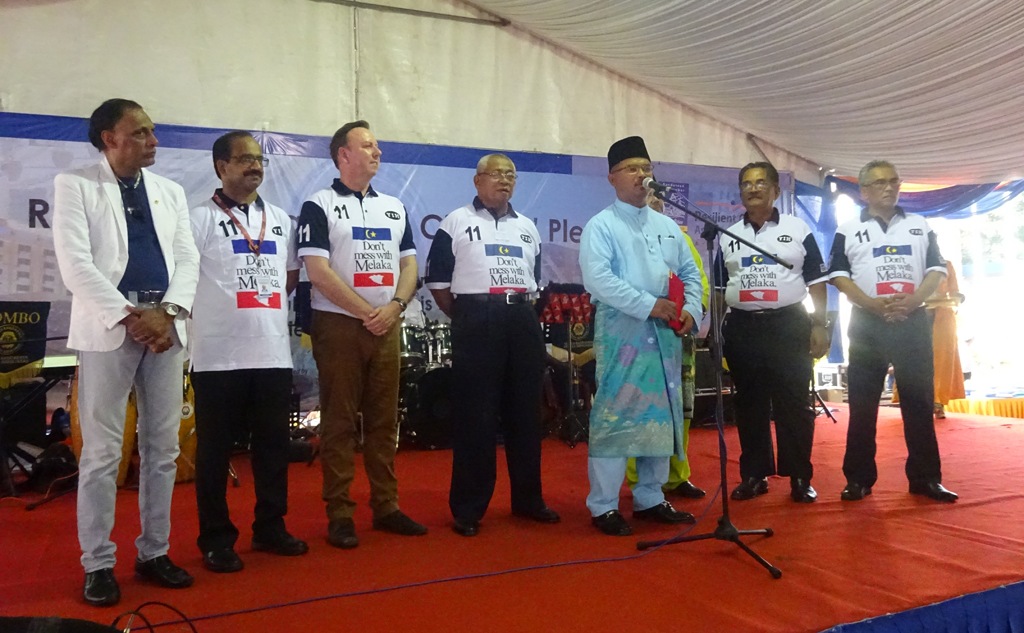“We cannot do this alone”. Building resilience is a collective business – Final thoughts from Resilient Cities 2017
The world is at a tipping point.
Whether it is a tipping point that promises a bright, sustainable future or one in which we’ll have to face growing challenges from climate change and unsustainable urbanization, is up to us.
This message by David Stevens, Head of the UNISDR Bonn Office, sums up what the 2017 Resilient Cities Forum, now wrapping up in Bonn, Germany, was about.
The almost 50 sessions of the conference had one clear common thread: the need to build coalitions and partnerships at all levels.
To borrow the worlds of Mayor Navin Ramsoondur of Vacoas-Phoenix, Mauritius, “we cannot do this alone”. And although that powerful message was delivered on behalf of small island states communities currently threatened by the first deadly effects of climate change, its spirit innerved in one way or another the three days of workshops, panels, roundtables and networking opportunities that brought together at Resilient Cities 2017 over 400 local leaders, sustainability practitioners, researchers and business leaders.
The Insurance Industry & Cities Forum addressed the tough questions of how cities can, today, manage their risks to maximize their resilience and save lives and resources, all while reducing carbon emissions. Risk analysts, insurers and development officials showed how the industry sector can help cities assess their exposure to climate adverse events and development traps and build their resilience. Local leaders, such as Mayor Andrew Mua Honiara, Solomon Islands, brought in the perspective of the most vulnerable and the need to build capacity and even literacy within exposed communities.
The Urban Food Forum took stock of how far the food agenda has come in the past few years, with a dedicated Sustainable Development Goal and its inclusion in the New Urban Agenda approved at Habitat III last year. It also showed how local and regional food systems planning is instrumental in building resilience in communities worldwide, as shown by the many lessons learned shared by cities such as Medellín, Colombia; Quito, Ecuador and Ede, Netherlands.
Many other sessions touched on crucial topics such as: urban health, forced migrations, land degradation, urban violence linked to climate change, sustainable building solutions.
The cities of Quito, Copenhagen and Accra shared what they learned so far as they implemented plans and projects to reduce the risks of floods, manage 100-year storms and spur urban farming as a resilience-building measure.
During the closing plenary of Resilient Cities 2017, Koko Warner, UNFCCC, rhetorically asked “Is the future so bad we can’t even think about it? It can’t be”.
And that is, perhaps, what this year’s edition – the 8th– of the forum was about: people and organizations coming together, looking at the present and the future with calm resolve and building coalitions to overcome the many challenges they face.
When an unprecedented wave of migrants and asylum seekers reached the shores of Sweden in 2015, the cities of Malmo, Gothenburg and Stockholm started having weekly meetings and calls, they checked on each other, helped each other cope with the emergency and, perhaps more importantly, put the people arriving after unspeakable sorrows and long journeys at the center of their administrative action, adapting their procedures and plans in the face of the unexpected.
It takes courage to acknowledge inconvenient truths and hard realities. It takes even more to set out to solve those problems, with science-based and evidence-driven action, building, along the ride, durable bridges between and within communities, sectors, countries and regions. We will need these bridges more and more, in the coming years, as the world nears its tipping points. What happens next? That’s up to each and every one of us.







